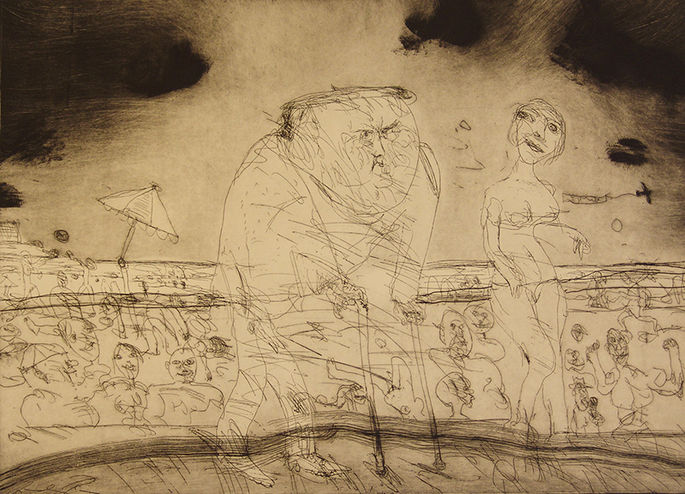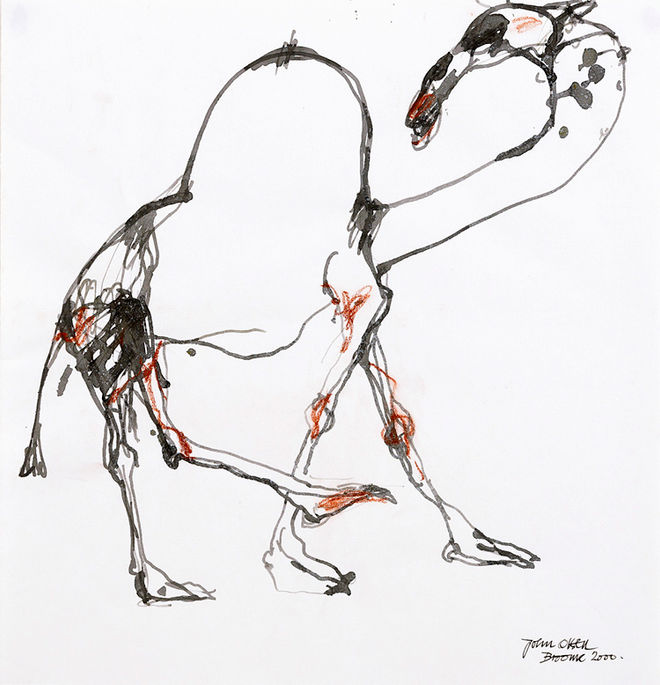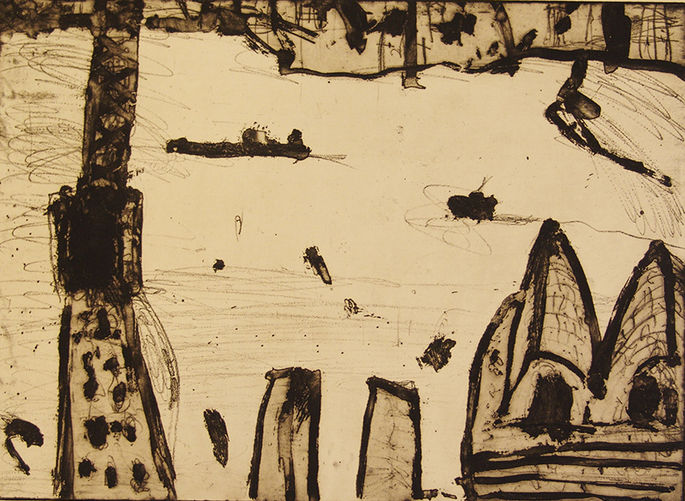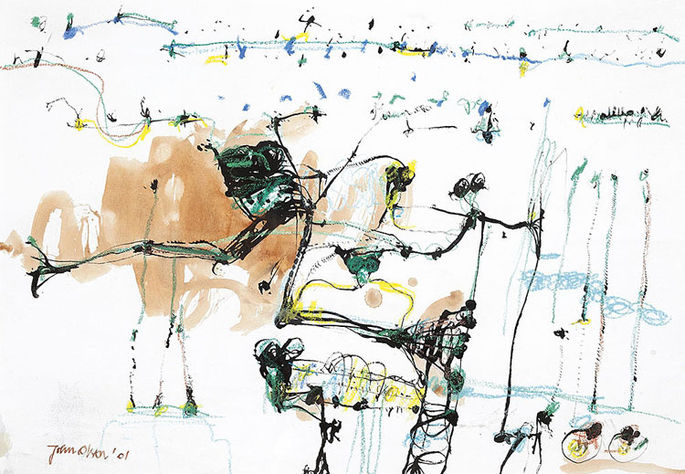
JOHN OLSEN
Nationality:
Australian
Year:
John Olsen (b.1928-2023) OA, OBE
Salient Points:
He will be missed the highly awarded, traded and valuable legend of Australian.
Highest Auction Record of $1,075,500
Auction record of over $1M
Over 100 auction results over $100,000
Auction record for a watercolor - $156,000 prior to passing
Highest price for work from Kimberley/Pilbara same series: $317,000
Winner of the Archibald Prize in 2005
Winner of the Wynne Prize twice 1969 & 1985
Hotel named after him – The Olsen in Melbourne
Considered a national treasure, his artworks are held in every state gallery in Australia, as well as institutional, corporate and private collection across Australasia, UK, Europe and USA
Biography:
For all Australians, the name of John Olsen is part of the furniture of the Sydney Opera House, because his exultant painting “Five Bells” – based on the poem by Kenneth Slessor – was hanging in the foyer when the building set sail into the world. But John Olsen’s story is bigger and more complicated than a single impact, however glamorous and historically charged.
Olsen was prominent among the second wave of Australian painters who put their art on the international map after World War II. To a great extent the first wave— Russell Drysdale, Sidney Nolan, Arthur Boyd – had already made Australia a world name, putting the Australian landscape into the global picture. The painters of the second wave – Margaret Olley, Jeffrey Smart, Charles Blackman and others – were advancing into conquered territory, and did not always feel bound to concentrate on home-grown subjects. It was enough that they were Australians. This applied also to John Olsen, although some of his apparently near-abstract pictures proved, on closer examination, to be teeming with typically Australian life forms.
As his graphic work particularly reveals, his open spaces are as full of living things as an outback dry lake after the rains. The vital forms, some of them tiny, are captured with the meticulous draughtsmanship that he learned in three different art schools in Sydney at the beginning of his career. In the war-time and post-war years, when he, Olley and Smart were all getting started, the emphasis on drawing was inexorable: students weren’t allowed to get away with palming off the slapdash as a free expression. All of the big names proved capable of combining this dedication to the grindstone with a Bohemianism that not only makes their memoirs remarkable, it makes it remarkable that they survived to recount them. Olsen was no exception, but there could be no better example than him to show the way discipline is fundamental to artistic freedom.
Clive James.
Awards:
2005 – Archibald Prize Winner
2001 – Centenary Medal
2001 – Officer of the Order of Australia
1993 – Australia Creative Fellowship Award
1989 – Sulman Prize Winner
1985 – Wynne Prize Winner
1969 – Wynne Prize Winner
1977 – Order of British Empire (OBE)
Collections:
John Olsen’s work is represented in ALL Australia state gallery collections (Art Gallery of New South Wales, 180+ works), National Gallery of Australia, Canberra, Victoria and regional galleries Australia wide. He is also represented in institutional, corporate and private collections in Australasia, United Kingdom, Europe and the United States of America.




